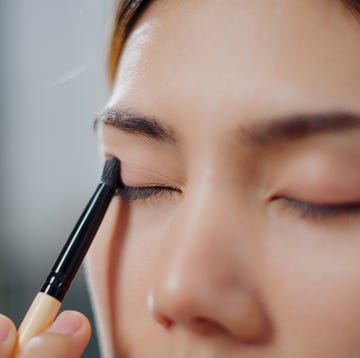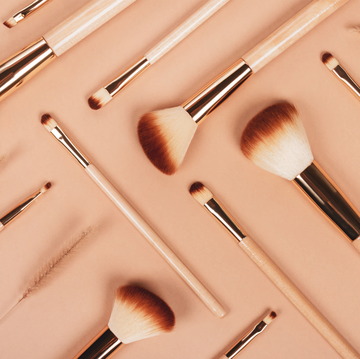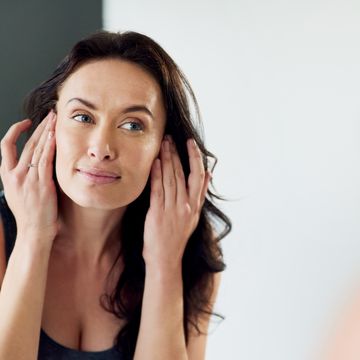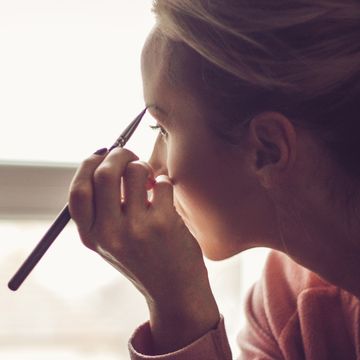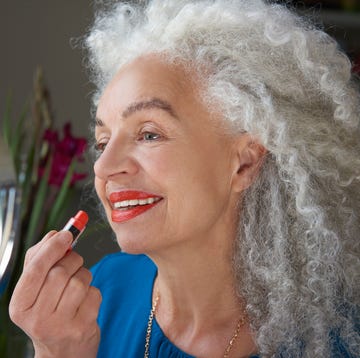Struggling to find the perfect foundation shade? If you’ve ever fallen victim to the dreaded tell-tale foundation line along your jaw, you’re not alone; shade matching is an art. But, don’t fret - there’s a key step that often goes overlooked that you may have missed: identifying your undertone.
To start with the basics of undertones, Revolution Beauty Expert Emily Wood explains: ‘An undertone is the subtle, individual hue beneath your skin’s surface. It doesn’t change with the seasons like your overall tone. It can be warm, cool, or neutral.’
So why does knowing your undertone matter? As Bobbi Brown Global Pro Artist Amy Conway puts it: ‘Knowing your undertone is essential because it helps you choose shades that complement you and your skin tone. Foundation should disappear into the skin, and matching your undertone is how you create that flawless finish that looks exactly like your skin, but better.’
What to read next
How do I identify my undertone?
First things first - it’s important to understand the three main undertones and how they show up in the skin. Amy explains:
- If you see yellow or golden hues, this would mean you have a warm undertone.
- If you see pink, red and blue hues, this would mean you have a cool undertone.
- A mix of both would give you a neutral undertone.
‘The best way to identify which undertone you have is to look at your skin in natural light. Think about how your skin looks when it’s bare,’ she says. ‘One of my go-to tricks is to look at the skin on your chest, not just your face. The chest usually reflects your true undertone more clearly, especially if you’ve had sun exposure on your face.’
If you’re struggling to spot your undertone at first glance, you’re not alone, and there are countless hacks floating around the internet which claim to help (which can be confusing). Fortunately, the experts have weighed in on the ones that actually work.
The Vein Test
Amy says: ‘The vein test is probably the most reliable if you can see your veins clearly.’
To try it, simply examine the veins on the inside of your wrist or the top of your foot. Do they appear more blue or green?
If your veins look more blue, you’re likely cool-toned. If they appear green, you’re warm-toned. And if you see a mix of both blue and green, you probably have a neutral undertone.
The White T-shirt Test
Can’t clearly see your veins? Don’t worry — there’s another easy trick, and all you need is a plain white T-shirt.
Emily says: ‘The white T-shirt test is probably the most telling — it gives you a clean, neutral contrast to see your skin clearly.’
If your skin looks rosy against the white fabric, you’re cool-toned. If it appears more golden, you have a warm undertone. If you can’t see much of a difference, you’re most likely neutral.
The Swatch Test
While the vein test and T-shirt test can be fun tricks for identifying your undertone, Amy says that when it comes to foundation, there’s no substitute for testing it in person: ‘The best test is to head to a counter and test foundation along the jawline, then take a step back to see which undertone melts into the skin.’
‘The biggest mistake I see would be testing foundation on the back of your hand or inside your wrist, as that skin often doesn’t match your face. When you know your undertone, you won’t fall into the trap of wearing a foundation that looks chalky, orange, or dull. You’ll get that seamless, second-skin finish that will give you the perfect match.’
Try testing out a few foundations that are close to your skin tone but differ by undertone (for example, one medium light foundation with neutral undertones, another with warm undertones, and one more with cool undertones). ‘Swatch’ these shades by applying three small patches in a row.
To find your perfect match, look at your swatches in artificial light and again in the daylight. Try not to think about which shades look ‘too dark’ or ‘too light’, but which look too pink, orange or yellow against your skin. Your perfect shade should blend into your natural skin tone seamlessly.
How can undertones affect the rest of your makeup?
Undertones are key to finding your perfect foundation match — but did you know they also affect how different colours look on your skin? We’re talking blush, lipstick — even eyeshadow.
‘This is where it gets fun!’ says Amy, ‘If you have a warm undertone, you’ll generally look amazing in coral, peach, or warm red tones. For cool undertones, try berry, plum, or blue-based pinks will really brighten the smile. And for neutral, you can often wear both.’
That said, Emily notes that there is no rulebook - it all comes down to the look you’re aiming to create: ‘Some of the best looks happen when you go against the grain - contrast can be electric if you wear it with intention.’
Can my undertone change?
The answer is yes! ‘While undertones are fairly stable, elements like sun exposure, skincare, or even ageing can slightly shift how your skin presents,’ says Amy.
So if you thought you’d nailed your undertone, only to find your favourite foundation no longer looks quite right, it might be time for a re-match: ‘We always recommend re-matching seasonally’ Amy adds.
Here’s to finding your perfect match!










